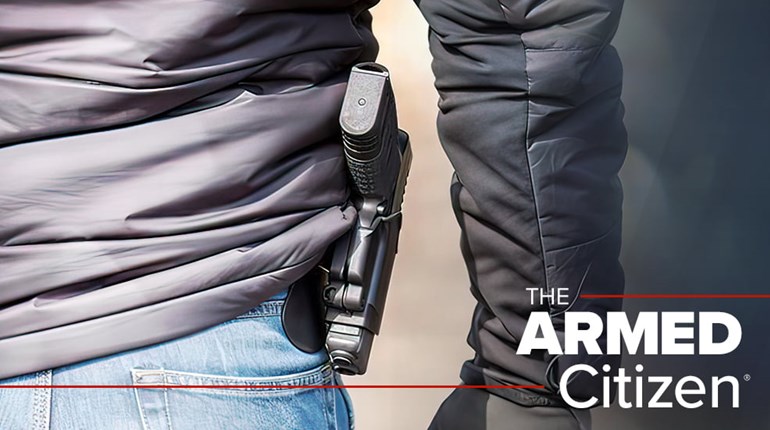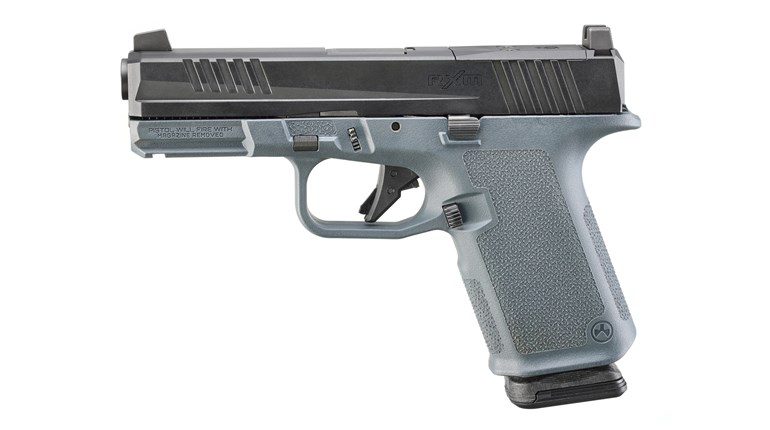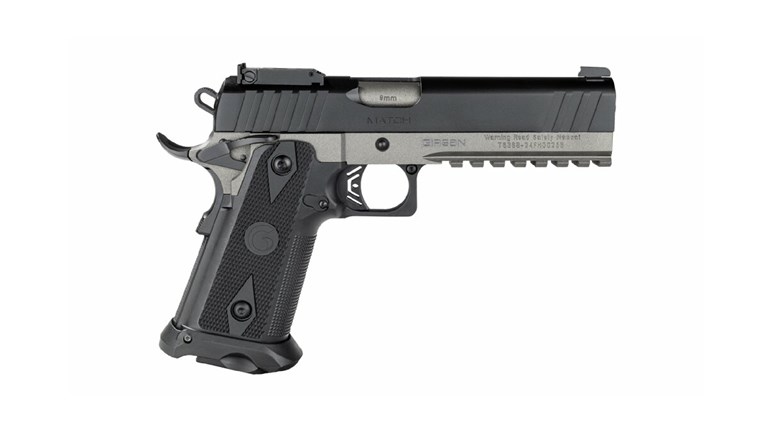
A firearm is your last line of defense in a home-security plan, but it is often the first thing people consider. A comprehensive home defense includes things like a fence, good locks on your doors, a security video monitoring system and even a dog. You’ll most likely only need your firearm when those levels of security fail. For the home-defense gun, there are three primary options to choose from: the shotgun, handgun and some sort of rifle, like a carbine. Though the shotgun or carbine is a popular choice, I believe a handgun is the better option for most homeowners.
To understand why, we must look at the totality of the circumstances. To begin with, many who want a home-defense firearm are already carrying a concealed handgun daily. Using your carry gun for home defense uncomplicates the problems associated with being familiar and proficient with two different firearms. As you’re already likely training with your carry gun, if you let that gun pull double duty, you’ll be training with your home-defense gun at the same time.
Regarding training, it’s cheaper to feed a handgun with ammunition than it is a shotgun or a carbine. Good training ammunition for a handgun can be purchased for around 30 cents per shot. Affordable shotgun ammo will cost about 25% more and may not provide the same pattern on target as the loads you want to use for home defense. Carbine training ammunition is even more expensive, costing almost twice as much as it does for a handgun.
The next consideration is access and security. You can keep a handgun on you and under your control much easier than you can a shotgun or carbine. Carrying a handgun at home is just as easy or easier than carrying concealed because there’s no need to hide it. Alternatively, if you need to store and secure your home-defense gun out of reach of children, it’s easier with a handgun. Handguns are also easier to secure in more locations, especially with the wide array of secure-access storage options available today.
One of the things I like most about a handgun for home defense is that you can accurately and effectively shoot it with one hand, leaving your other hand free to do things like operate a flashlight, call 911 and help move or direct family members to safety; however, if a confrontation becomes hand-to-hand and your home-defense firearm is a shotgun or carbine, you’ll need both hands to keep your attacker from taking it away from you. But, if you’re armed with a handgun, you’d likely be able to still shoot your attacker. This is measurably more difficult to do with a shotgun or carbine, particularly if you’re engaged in a struggle to retain it.
Some will argue that a shotgun is more intimidating, but I can tell you from my 13 years of experience as a police officer that all guns are intimidating. This is mostly because no one wants to get shot with any type of firearm. Some also argue that a shotgun has more stopping power. That’s partly true, but, as with all firearms, the more devastating they are on the muzzle end, the more recoil there is on the shooter’s end. I trained a lot of law-enforcement officers and found that most of them dread shotgun training because of recoil. It’s generally not a great idea to trust your life to a firearm you dread to shoot. Finally, while the pattern a shotgun throws can make hitting a bit easier, hits with only a portion of the shot pattern are less effective and the pellets that miss could endanger the innocent.
The shotgun does have the advantage of versatility when it comes to ammunition. A common home-defense load for a shotgun is 00 Buck, but its large pellets penetrate very deeply and can be hazardous to family members in another room. At home-defense distances, bird shot is a more viable option. There are also less-than-lethal rounds like rubber bullets, bean bags and CS projectiles. These can be effective for law enforcement when less-than-lethal force is mandated, but in a life-or-death home-defense situation, counting on less-than-lethal force to deter a drug-crazed attacker only improves the bad guy’s odds.
If, like me, you’re convinced a handgun is a better option for home defense, you now need to select the best handgun, ammunition and accessories. Many gun-counter gurus will suggest a revolver, but, because of their long and heavy trigger pull, revolvers are harder to shoot accurately. They also have a limited capacity. True, you won’t always need 15 rounds to defend yourself from a home invasion, but you also do not want to run out of ammo when your life is on the line. Truthfully, a home-defense handgun is no different than a concealed-carry handgun. Primarily, it needs to fit your hand, and you need to be able to control it during sustained strings of fire.
I generally suggest a compact pistol in 9 mm Luger that weighs between 22 and 32 ounces. Most adults can carry and shoot a handgun this size comfortably and accurately. Load it with reputable hollow points, like Federal’s HST, select a good concealment holster for daily wear, a comfortable holster for around the house, and an easy-to-access-but-secure storage safe for the home. You should also get a high-intensity flashlight of at least 60 lumens to cut the darkness, because bad guys almost always prey at night. A gun light is not a bad idea—just keep in mind that if you use it for searching, you’ll also be pointing a gun at everything you look at. It’s better to use the flashlight to look, and the firearm light to shoot.
One thing I would add is it can still be a good idea to have a shotgun or a carbine handy in the home. Other family members may not be as proficient or comfortable with a handgun, and if you live in a remote location, you might have to defend your home and family from four-legged predators, like coyotes, mountain lions and bears. For those threats—especially the largest ones—a shotgun or a carbine can be a better option.
Finally, and just as importantly, another thing that needs to be addressed is training and practice. Owning a fighter jet is of no use if you cannot fly it, and the same is true with a home-defense firearm. Regardless of the firearm you choose, you should be able to shoot it, keep it in the fight and maintain it correctly. And if you keep it stored in a safe, you should practice accessing it. Get training, practice frequently and develop a plan for you and your family to follow if the unthinkable happens. Remember, the firearm is the last line of home defense. If you must use it, you and everyone else in your family needs to be ready.


































